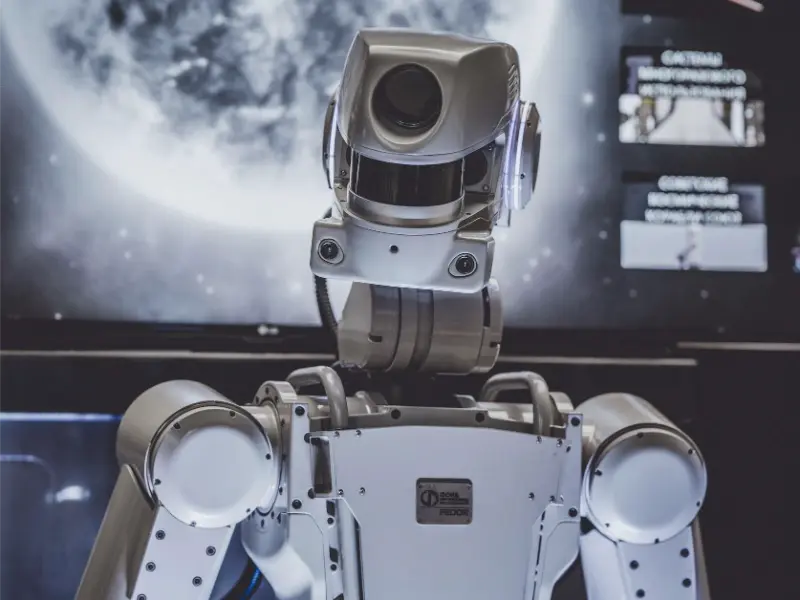- Humanoid robots are designed to resemble and mimic the physical appearance and capabilities of humans, equipped with sensors, actuators, and artificial intelligence to interact with their environment in a human-like manner.
- The development of humanoid robots has a rich history, dating back to ancient times and gaining momentum in the 20th century with key milestones in robotics technology, such as the creation of robots like ASIMO and Sophia.
- Humanoid robots offer advantages in various industries, including increased efficiency, precision, and flexibility in performing tasks, but face challenges related to hardware design, software development, and ethical considerations in society.
A humanoid robot is a robot that is designed to resemble and mimic the physical appearance and capabilities of a human being. These robots typically have a body structure similar to that of a human, including a head, torso, arms, and legs. They are often equipped with sensors, actuators, and artificial intelligence to perform tasks and interact with their environment in a human-like manner. Humanoid robots are used in various fields, such as research, entertainment, healthcare, and customer service, to perform tasks that require human-like dexterity and mobility.
History and importance of a humanoid robot
The development of humanoid robots gained momentum in the 20th century with advancements in robotics technology. Key milestones include the creation of robots like ASIMO by Honda and Sophia by Hanson Robotics.
Humanoid robots play a crucial role in various industries and fields, including healthcare, education, entertainment, and customer service. They are used to perform tasks that require human-like dexterity, mobility, and interaction. Humanoid robots have the potential to revolutionise the way we work, learn, and interact with technology.

Anatomy of a humanoid robot
Humanoid robots are designed to have a body structure that resembles a human, with a head, torso, arms, and legs. The physical design of humanoid robots allows them to move and interact with their environment in a manner similar to that of humans.
Humanoid robots are equipped with a variety of sensors, such as cameras, touch sensors, and gyroscopes, to perceive their surroundings. Actuators, such as motors and servos, enable humanoid robots to move their limbs and perform tasks. These sensors and actuators are essential for the robot to interact with the environment effectively.
Humanoid robots are powered by artificial intelligence algorithms that enable them to make decisions, learn from their experiences, and adapt to new situations. Programming plays a crucial role in defining the behaviour and capabilities of humanoid robots, allowing them to perform complex tasks autonomously.
Types of humanoid robots
Research and educational humanoid robots are used in academic institutions and research labs to study human-robot interaction, cognitive robotics, and artificial intelligence. These robots are designed to facilitate research and experimentation in robotics and AI.
Service and healthcare Humanoid robots are used in settings such as hospitals, care facilities, and homes to assist with tasks like patient care, therapy, and companionship. These robots are designed to provide support and assistance to individuals in need.
Entertainment humanoid robots are designed for leisure and entertainment purposes, such as theme parks, exhibitions, and events. These robots are often equipped with interactive features and engaging behaviours to entertain and engage audiences.
Also read: German Scholars Discuss Application of Humanoid Robots in Education
Advantages and challenges of humanoid robots
Humanoid robots offer several advantages, including increased efficiency, precision, and flexibility in performing tasks. They can work in environments that are challenging or hazardous for humans and provide support in various industries, such as manufacturing, healthcare, and entertainment.
Developing humanoid robots poses challenges related to hardware design, software development, and human-robot interaction. Challenges include ensuring the safety, reliability, and ethical use of humanoid robots in society. Overcoming these challenges requires interdisciplinary collaboration and innovative solutions.
The deployment of humanoid robots raises ethical considerations regarding privacy, autonomy, and the impact on the workforce. Concerns include job displacement, data security, and the potential misuse of robots in society. Addressing these ethical considerations is essential for the responsible development and deployment of humanoid robots.
Applications of humanoid robots
In healthcare settings, humanoid robots help with duties like therapy, rehabilitation, and patient monitoring. With individualised care and support, these robots can enhance patient outcomes and benefit medical staff.In order to engage with consumers, offer information, and improve the overall customer experience, humanoid robots are used in the hotel and customer service sectors. In hotels, airports, and retail spaces, these robots can act as greeters, guides, and helpers.
Also read: How are robots used in the food industry?
In educational contexts, humanoid robots are utilised to instruct pupils in robotics, programming, and artificial intelligence. These robots can spark students’ interest in STEM subjects and involve them in practical learning activities. Humanoid robots are used in research to investigate human behaviour, social interaction, and cognition.
Humanoid robots are employed in interactive displays, concerts, and events as entertainment. Through interactive experiences, games, and narrative, these robots can hold the attention of audiences. People of all ages are enthralled and entertained by their distinctive brand of social interaction and entertainment.
Future of Humanoid Robots
The future of humanoid robots is shaped by advancements in technologies such as artificial intelligence, machine learning, and robotics. Emerging technologies, such as soft robotics, bio-inspired design, and human-robot collaboration, are driving innovation in humanoid robotics.
Humanoid robots have the potential to impact society and the workforce by transforming industries, creating new job opportunities, and changing the way we interact with technology. The integration of humanoid robots into various sectors can lead to economic growth, increased productivity, and improved quality of life.
Predictions for the future of humanoid robots include increased adoption in healthcare, education, and entertainment, as well as advancements in human-robot collaboration and social robotics. The continued development of humanoid robots is expected to lead to new applications, capabilities, and opportunities for human-robot interaction.

